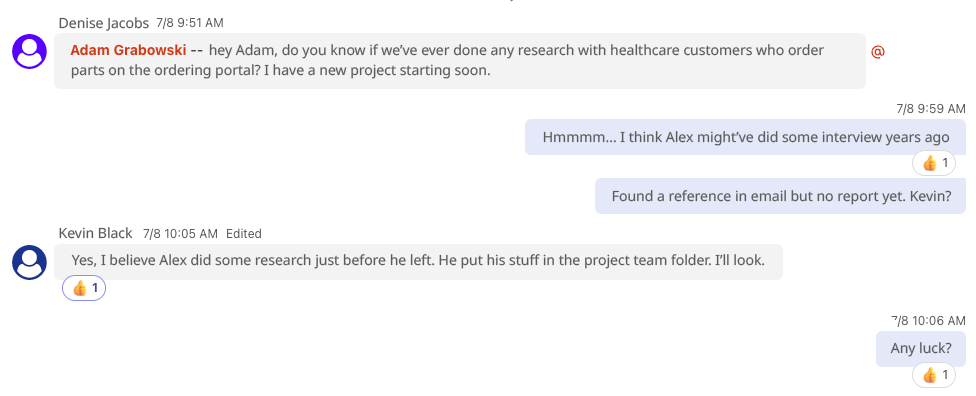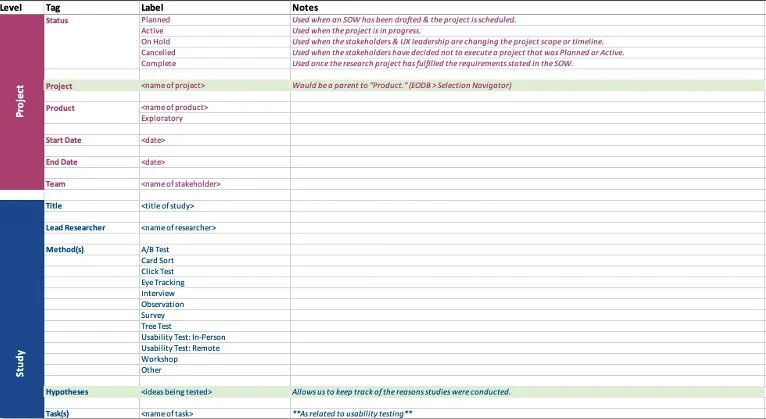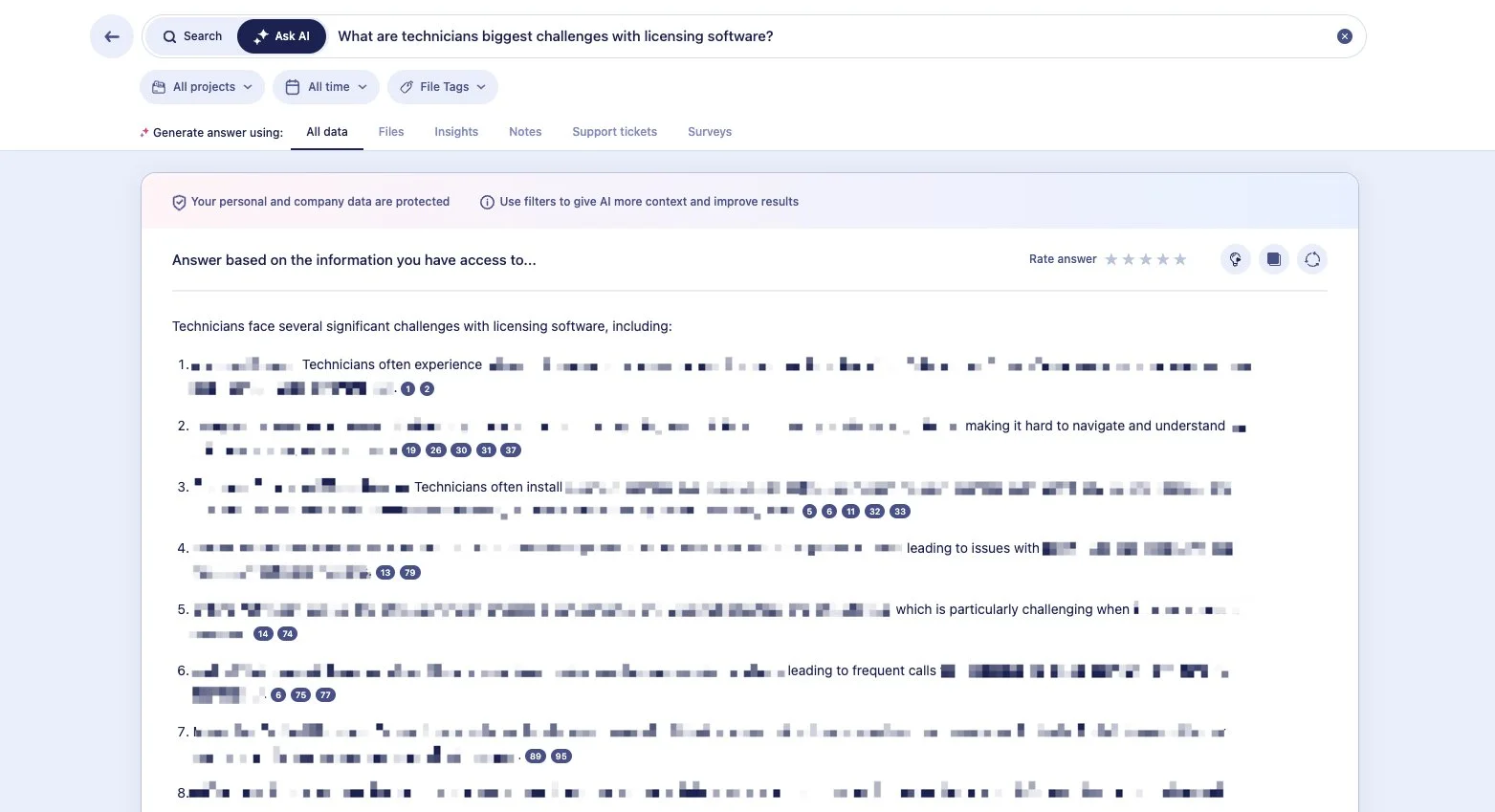Research Insights Repository
Turning our past research into a platform for new learning
Year
2022 - Present
My Role
Research Team Practice Lead, Business Case Development, Operational Improvement
Background
We believed that the customer insights we were uncovering had value beyond project timelines and that our business partners could benefit from our prior research. And when we were asked about past research it was incredibly difficult find relevant content in a slew of project folders. We recognized the opportunity to create new value from past research if it were cataloged and accessible.
Challenges Faced
Valuable customer insights were being lost and forgotten after projects end
Finding prior research was a “needle in the haystack” effort
Our organization wasn’t capitalizing on existing knowledge, leading to duplicate efforts or blind spots
A typical interaction trying to find prior research
Approach
We identified a list of must-have and nice-to-have features, evaluated a number of vendors, and crafted a business case for a research repository. Instead of requesting funding, we found that we could replace one of our costly vendors and fund this project with no additional cost to our team budget.
We selected a vendor and began an exhaustive process to establish a tagging strategy, topology, and uploading our research. However, halfway through year one, our research team was finding it difficult to invest the time to upload and tag their research while being barraged by incoming requests. And we weren’t able to populate enough research to achieve the critical mass needed for our repository to be truly useful to the larger organization. We needed to rethink our approach.
At this critical juncture, we learned that another tool we were already using (Marvin) had expanded its archival capabilities. Instead of requiring our researchers to meticulously tag their content this tool would automatically tag and index content with AI. So we migrated our initial repository into the new platform. With upload and tagging nearly effortless we were able to upload 4 years of user research in just a few months.
At a quarterly All Hands Meeting, we introduced the repository and demonstrated how anyone in the organization could discover customer insights through Chat-GPT style prompts. In the three months after this presentation we had nearly 100 users actively using our repository. This engagement confirmed the that there was value in prior research.
Heavily-redacted example of a real report culminating prior research
Additionally, this platform provided a new capability for us. Now when we received new research requests we could easily create reports of our existing knowledge and craft research plans to expand and target new learnings.
Conclusion/Learnings
Being creative with our budget was the key to success on this initiative. We were able to add this new capability while reducing our team’s expenses. And our initial misstep with the first vendor is a good reminder to consider the end-to-end process changes and not just the results. The repository has proven itself invaluable; especially in the discovery process where researchers and non-research colleagues can explore our knowledge base with ease.
NEXT UP: Team Charter



